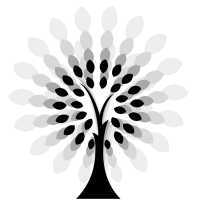Ligation
Ligation, often simply called binding, is the thaumaturgical discipline of physically binding an elemental to a solid object, so that solid matter becomes a part of the elemental's physical matrix.
Magicplugin-autotooltip__small plugin-autotooltip_bigMagic
Magic, also called thaumaturgy is the art and science of harnessing elementals, and instructing them to carry out simple or complex tasks.
Invoking more powerful spirits or gods is a related but much more dangerous art, called theurgy.
Magic
magic
This is in a series of articles about
 plugin-autotooltip__small plugin-autotooltip_bigMagic
plugin-autotooltip__small plugin-autotooltip_bigMagic
Magic, also called thaumaturgy is the art and science of harnessing elementals, and instructing them to carry out simple or complex tasks.
Invoking more powerful spirits or gods is a related but much more dangerous art, called theurgy.
Magic
magic
This is in a series of articles about
This is in a series of articles about magic, thaumaturgy and esotericismplugin-autotooltip__small plugin-autotooltip_bigMagic
Magic, also called thaumaturgy is the art and science of harnessing elementals, and instructing them to carry out simple or complex tasks.
Invoking more powerful spirits or gods is a related but much more dangerous art, called theurgy.
Magic
magic
This is in a series of articles about.
Elementals in nature will attach themselves to a physical object, particularly when it is near a regular and natural source of aliment.
Once bound, the elemental is imprinted with a set of instructions to perform actions in response to specific stimulus, thereby creating a thaumaturgical device, or lamenary.
Silfs are the elementals most commonly used in bindings, though sakadas are sometimes used in magicplugin-autotooltip__small plugin-autotooltip_bigMagic
In common terms, magic is the art of producing a desired outcome through occult means. Various arts are described as magical, from common street illusionists, village herbalists, and rituals for the intercession of deities. However, true magic is the art and science of elemental mastery, harnessing elemental creatures and instructing them to perform simple or complex tasks. weapons and nohns in site-specific bindings like wards and defences.
Over time the elemental will gradually lose power, even if not used, unless it is stored at the site of an alimentary node. Once their store of energy diminishes beyond a certain point, the elemental will die. Additionally, many Rasian masters expressed the concern that shackling an elemental - a living creature - to solid matter for long periods of time, years or even centuries, slowly “twists” the elemental and drives it mad. There are many anecdotal stories of ancient magical artifacts becoming dangerous, lashing out at their users or causing unpredictable effects.
Consequently the Rasian Academy declared that magisters should create lamenaries only for short term use, releasing the elemental once the task is over. Moreover they enforced imprinting a “dead man's sequent” into all lamenaries, meaning that on the death of their creator, the final act of the creator's primus will be to send an instruction freeing all elementals from ligation.
